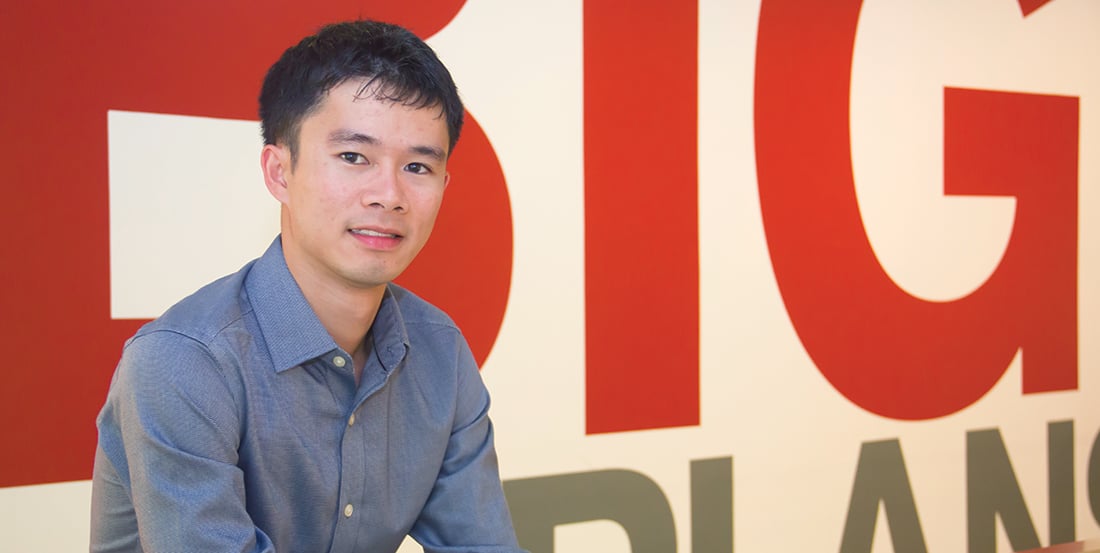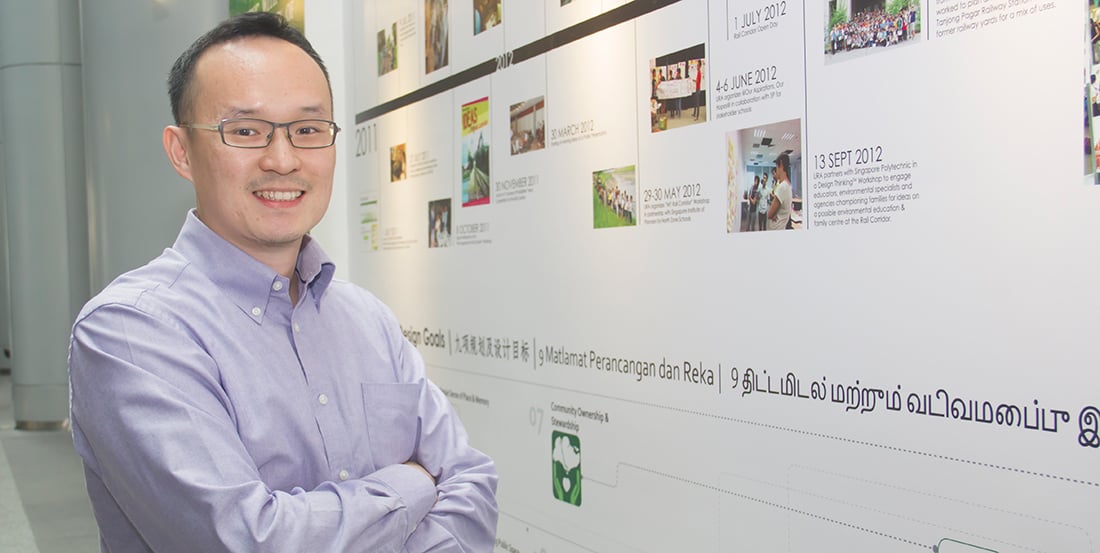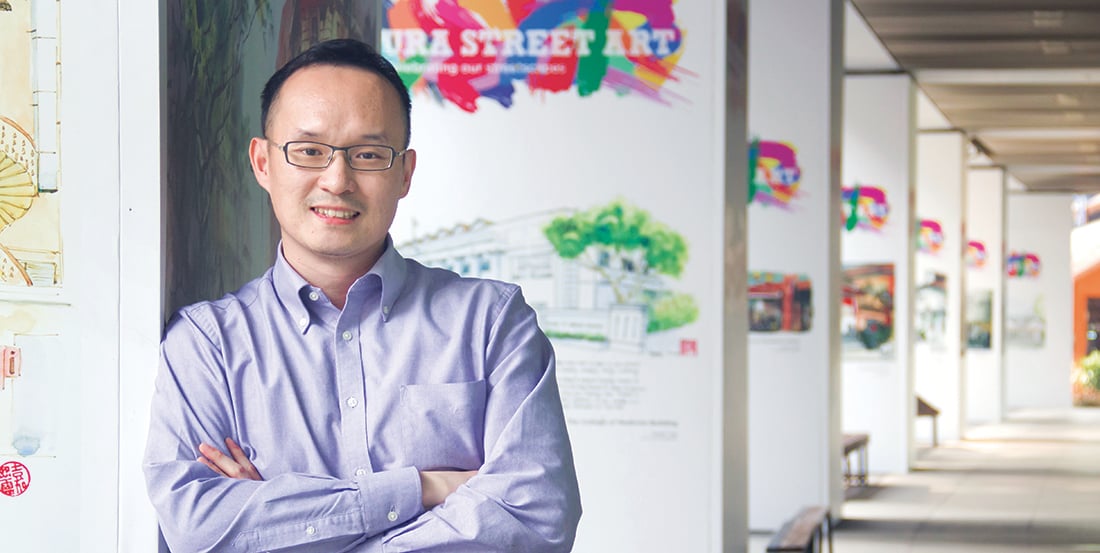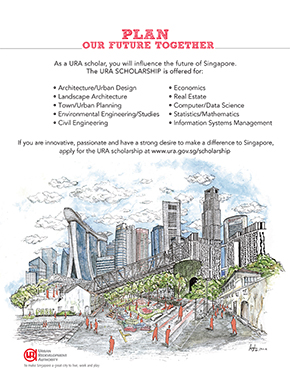L ooking back 50 years into the past, it is hard to imagine that the Singapore we know and love now used to suffer from lack of housing, lax standards of cleanliness, and inadequate access to basic amenities.
The transformation of our country can only be described as a feat of human ingenuity. Over the years, URA has dedicated itself to the vision of making our country into a vibrant and distinctive global city. Today, Singapore is hailed as an exemplary showcase of modern infrastructure and urban planning.
We speak to URA scholars Tham Cheng-E and Timothy Chow. They tell us more about how they help the organisation build a better Singapore, and also about how URA has helped them achieve their full potential.
Where Passions Reign
URA is a place where individuals from various specialisations come together to work towards the singular goal of making Singapore a great city to live, work, and play.
Cheng-E has always wanted to be an architect, and now he’s living his dream as an Executive Architect at URA. He tells us, “Architecture is a very human affair from start to finish. It’s about how people act and react to their environment, and I wanted to understand the synergy between people and spaces. Regardless of the product – whether it’s a hospital or a hotel – you have to think of ways to make the spaces habitable and comfortable for people.”
When questioned on his choice to pursue a scholarship at URA, he simply states, “To me, URA is the agency that does everything – from housing to infrastructure planning to commercial development. URA is in charge of coordinating it all, and I knew I would be exposed to a broad and diverse scope of work by joining the organisation.
“Also, I was interested in exploring a different side of architecture. Architecture is building and user-oriented in many ways, while the work at URA encompasses urban design, shaping the developments in relation to the urban environment. In that way you consider not just the individual building but also its impact and contribution to its context.”
Timothy’s interests are similar to Cheng-E’s, but he chose a different path. “I was always interested in architecture, but I was not very certain I wanted to pursue it as a career. I decided on urban studies because it deals with architecture as well as a range of other urban issues. It was just a good melding of all the things I was interested to do,” he says.

Timothy Chow
URA Scholar (Overseas)
Planner
Now working as a Planner at URA, he says, “I felt that URA was a good fit for an urban studies graduate like me. At the time I applied, URA was probably the only agency offering a scholarship for someone interested in the field of urban studies.
“Furthermore, I did an internship with URA before entering university, which gave me a clearer idea of what its work entailed. Hence, I was more informed about taking up a scholarship with the organisation – a big decision then for a young man just out of National Service. I got to know the people better and continue to be good friends with many of them. It’s definitely a plus point to have people you can turn to and learn from.”
An Enlightening Journey
URA provides its scholars with the opportunity to grow and achieve their best. Cheng-E is grateful for what URA has given him. “There’s the financial help of course,” he jokingly replies when asked about how he benefited from the scholarship. “More importantly, beyond that, the URA Mid-Term Scholarship has given me the opportunity to study overseas, which enables me to be immersed in a foreign context and find out the different ways in which things are done. This is especially important in the architectural profession, and an excellent opportunity to develop an in-depth understanding of how we can make our own country even better.”
Timothy concurs, saying that URA has given him the opportunity to broaden his perspective by sponsoring his studies in the University of Pennsylvania, US. He enthusiastically tells us, “I hadn’t been to the US before I went to university, so it was quite an eye-opening experience. I learnt a lot about the cities around the world, and I was exposed to many things that we don’t experience here. For example, there are cities with issues of urban blight, poverty, as well as problems with equity and racial discrimination. You only get a good grasp of issues like these if you live in the environment and experience it first-hand.
“These issues may not seem directly relevant to Singapore, but the ability to see things from different perspectives is important so that we don’t take things for granted. After all, Singapore’s entire existence is contingent on not taking anything for granted. It was enlightening to learn from the experiences of other cities so that we can continue to improve ourselves.”

Tham Cheng-E
URA Mid-Term Scholar (Overseas)
Executive Architect
Looking to the Future
After years of working at URA, Cheng-E has built up quite a portfolio. He was the officer in charge of planning the development and rejuvenation of developments in the Orchard Planning Area, and was also involved in the planning and urban design of the Marina Bay and Marina South districts. “Working on projects like these is very fulfilling, because the results are very tangible, either as implemented policies or physical enhancements to the environment. You get to see the fruits of your labour in many different ways,” Cheng-E shares.
He is currently part of the team responsible for charting the strategic course of various land uses to ensure that the country keeps up with changing demands and global trends. He looks forward to contributing more in the planning and development of Singapore’s future.
On Timothy’s end, he recounts how he has witnessed the process of how URA’s schemes get implemented. “When I was an intern, I went on a site visit to URA’s pilot for new envelope control guidelines on a landed housing area in Sembawang. Fast-forward to today, we have announced the introduction of the new guidelines for landed housing island-wide. That was when I realised that URA was literally and figuratively pushing the ‘envelope’ and implementing its plans,” he laughs while beaming with pride.
To future URA scholars, Cheng-E’s advice is short and sweet, “You need to have a heart for the development and performance of the country, and you need to believe in what you do.”

